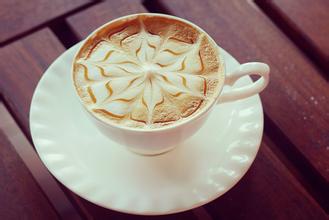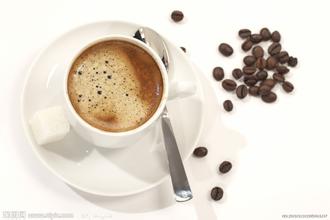Introduction to the planting environment in the manor area of Dominica coffee flavor
Trujillo, on the other hand, used extreme methods such as murder, abuse and intimidation to suppress opposition to the government. To show his arrogance, Trujillo awarded himself the Grand Marshal to rename the capital Santo Domingo to Trujillo, and he changed Mount Duat, the highest mountain in the Caribbean, to Trujillo. And the names of many large and small towns in the country are named after themselves and their relatives. Trujillo himself is 1/4 Haitians, but in order to drive out Haitians living in Dominica, he ordered troops to kill Haitians living in Dominica in 1937, known as the "Holocaust of parsley" or slaughter. In order to cover up the military action for the troops, Trujillo ordered all soldiers to use machetes instead of rifles. During the six-day period from the evening of October 2 to October 8, 1937, the multinational force stopped all the darker-skinned people near the border with Haiti in Dominica, and showed that the parsley wanted the other party to pronounce it in Spanish, because Haitians who used French could not correctly pronounce the name parsley in Spanish (perejil for many people and pè si for Haitians) As long as all Haitians are identified to have been murdered on the spot, it is estimated that about 17000 to 35000 Haitians have been murdered. A few years later Dominica agreed to pay $750000 in compensation to the Republic of Haiti for this incident, but in the end the actual amount of compensation was $525000. The compensation for each family member of the victim was originally planned to be US $30, but due to serious corruption in the Haitian government, the actual amount received by the family member was only US $0.02. [3]
After Trujillo came to power, although there were continuous means to suppress the cruelty of the people, his government has always been supported by the Vatican and most Dominican upper-class society, and the US government is well aware of the extreme cruelty of the Trujillo dictatorship. however, due to the rise of the communist regime in Cuba during the Cold War and the rise of the communist regime in Cuba, the United States needed the support of Trujillo, and the United States did not interfere in the administration of Trujillo. But after Trujillo tried to send someone to murder then Venezuelan President Romulo Betancourt in 1960, the US government and the Trujillo regime began to break apart. Trujillo himself was murdered in the capital Santo Domingo on May 30th, 1961, under the planning of the US Central Intelligence Agency.
Coffee in Dominica varies slightly in taste according to the altitude of the region where it is grown, with sour but rich taste in the highlands, and less sour and smoother taste in the lowlands. The high-quality coffee beans produced by some Dominican estates have a rich aroma, mellow taste and moderately bright sour taste, and are often compared with those from Puerto Rico or Jamaica.
Dominica-White Beach and Black Coffee
Turning to the introduction of Dominican coffee, the most distinctive features are fresh and elegant, full of particles, excellent acidity and pleasant flavor (two colleagues agree with this). Such flavor characteristics are not only related to varieties and soil quality, but also closely related to the picking and handling of raw beans. Coffee in Dominica is selected by the manual method with the highest cost, and workers mainly consider the fullness of coffee granules and the uniformity of coffee granules. According to these conditions, the coffee beans with the fullest and most uniform grains can represent the best quality in Dominica. The finest coffee. And only use water washing treatment to ensure the high quality and stability of coffee beans. Coffee beans treated with water washing taste cleaner, exude a touch of pure and soft aroma, and make people feel a faint fruity aroma and a winding aftertaste. The earliest coffee in Dominica was introduced from Martinique (the overseas province of France), dating back to the early 18th century. Dominica is an island country with a tropical climate, with little change in temperature throughout the year. Except for the lower temperature in the Central Cordillera Mountains, which can reach less than 0 ℃ in winter, the average annual temperature in other areas is between 25 and 30 ℃, while affected by the mountain topography, the north and east face the northeast trade wind with an annual precipitation of 1500-2500 mm, which belongs to tropical maritime climate. The mountain forest is dense, the leeward southwest annual precipitation is 500-1000 mm, the dry season is long, belongs to the savanna climate.
The temperate climate in Dominica is conducive to coffee cultivation, and the best places to grow coffee are the Barahona region in the southwest and the Cibao Valley north of Santiago, Dominica's second largest city. The northern region, represented by Hibao, and the southern region, including Okayabani Santo Domingo, produce good coffee. Among them, the coffee produced by Santo Domingo and Barney is famous all over the world, which is almost synonymous with domiga coffee.

Important Notice :
前街咖啡 FrontStreet Coffee has moved to new addredd:
FrontStreet Coffee Address: 315,Donghua East Road,GuangZhou
Tel:020 38364473
- Prev

Introduction to the flavor and taste characteristics of Puerto Rico boutique coffee growing environment
According to the Constitution formulated by the United States in 1952, the Governor is the Supreme Chief Executive, elected for a term of four years, and consists of a Council of Ministers. The United States Congress has the power to repeal laws passed by the Congress of Puerto Rico. The parliament is divided into the Senate and the House of Representatives. The island elects local commissioners to be resident in the United States Congress, but can only vote on the House Committee. [1] there are three major political parties: the people's Democratic Party and the New entrants.
- Next

Introduction to the flavor of Ethiopia's Sidamasha Chiso coffee growing environment with clean taste and no miscellaneous feeling.
In February 1977, Lieutenant Colonel Mengistu Haier Maryam (MENGISTU HAILE MARIAM) launched a military coup and served as Chairman of the interim military Administrative Council and head of State. In 1979, the Ethiopian Labor people's Party Organization Committee, dominated by soldiers, was established to implement an one-party system. In 1984, the Ethiopian Workers' Party was formed according to the Soviet Communist Party model. Mengistu, September 1987
Related
- Detailed explanation of Jadeite planting Land in Panamanian Jadeite Manor introduction to the grading system of Jadeite competitive bidding, Red bid, Green bid and Rose Summer
- Story of Coffee planting in Brenka region of Costa Rica Stonehenge Manor anaerobic heavy honey treatment of flavor mouth
- What's on the barrel of Blue Mountain Coffee beans?
- Can American coffee also pull flowers? How to use hot American style to pull out a good-looking pattern?
- Can you make a cold extract with coffee beans? What is the right proportion for cold-extracted coffee formula?
- Indonesian PWN Gold Mandrine Coffee Origin Features Flavor How to Chong? Mandolin coffee is American.
- A brief introduction to the flavor characteristics of Brazilian yellow bourbon coffee beans
- What is the effect of different water quality on the flavor of cold-extracted coffee? What kind of water is best for brewing coffee?
- Why do you think of Rose Summer whenever you mention Panamanian coffee?
- Introduction to the characteristics of authentic blue mountain coffee bean producing areas? What is the CIB Coffee Authority in Jamaica?

